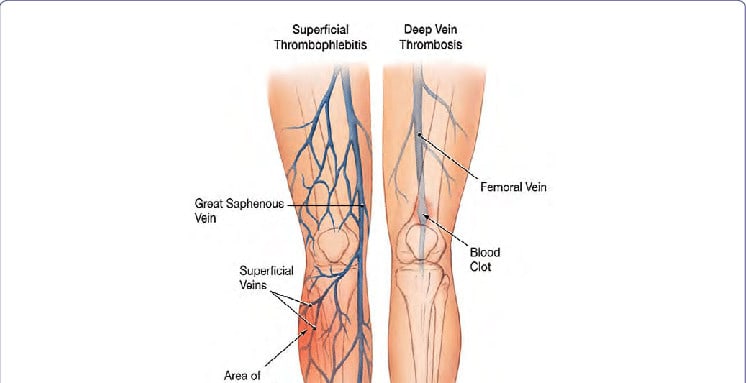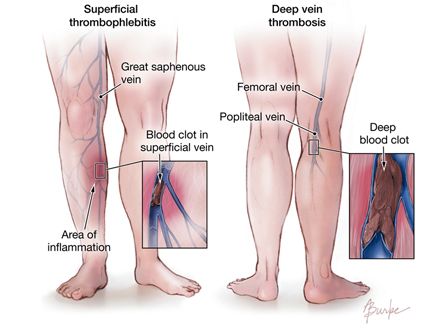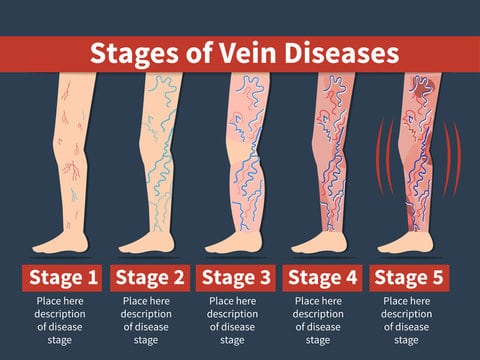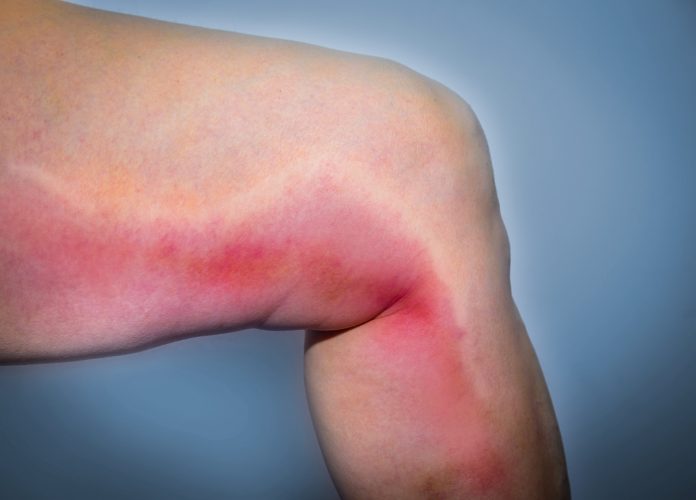The veins are the blood vessels that carry deoxygenated blood from the tissues back towards the heart and lungs so that it can be re-oxygenated. The effects of external forces, medical interventions or even simply extended periods of inactivity can cause a local inflammation of the vein. Sometimes this is associated with the presence of a blood clot in the vein while other times it is not.
Thrombophlebitis

The presence of a blood clot (thrombus) inside of a vein can lead to localized inflammation and a host of other problems. These blood clots can arise spontaneously or due to medications or other causes but are seen quite often with people who are inactive or immobile in a cramped setting for extended periods of time (such as in “coach class syndrome”).
The presence of a blood clot is obviously not good for the vein and its blood flow, but much more dangerously these types of clots can sometimes be released and end up being carried by the circulation to the lungs. If this takes place it can cause the life threatening condition known as a pulmonary embolism. For blood clots occurring in the larger caliber, deeper veins of the leg (one of the most common sites), a condition known as deep vein thrombosis (DVT), blood thinners (such as Coumadin or Lovenox) are routinely used to eliminate the clot and to keep new clots from forming.
Other Types of Phlebitis

Inflammation of a vein can also occur without the presence of a blood clot. Sometimes the administration of an intravenous solution (such as some antibiotics) can cause irritation and ultimately inflammation of a vein. This is known as chemical phlebitis. When an IV catheter is placed into a vein and it is too snug a fit this can also lead to irritation of the interior walls of the vein and the development of what is referred to as mechanical phlebitis. For these types of phlebitis, treatments can include taking anti-inflammatory medications and the application of moist heat to the affected area.
What Increases the Risk of Developing Phlebitis

For thrombophlebitis the risk of occurrence can be increased due to obesity, problems with blood coagulation, taking certain medications and extended periods of inactivity. If you are taking a long flight or a long car trip be certain to take time to get up and move around and exercise your leg muscles and be certain to stay hydrated. For some people the use of support hosiery may also be useful.
The occurrence of phlebitis and particularly thrombophlebitis can be minimized with appropriate preventive approaches. Fortunately, if it occurs there are numerous means to treat it and to minimize further vascular damage or other negative consequences. As always, speak with your medical provider if you are at risk for, or have developed, any type of vascular problem.


















